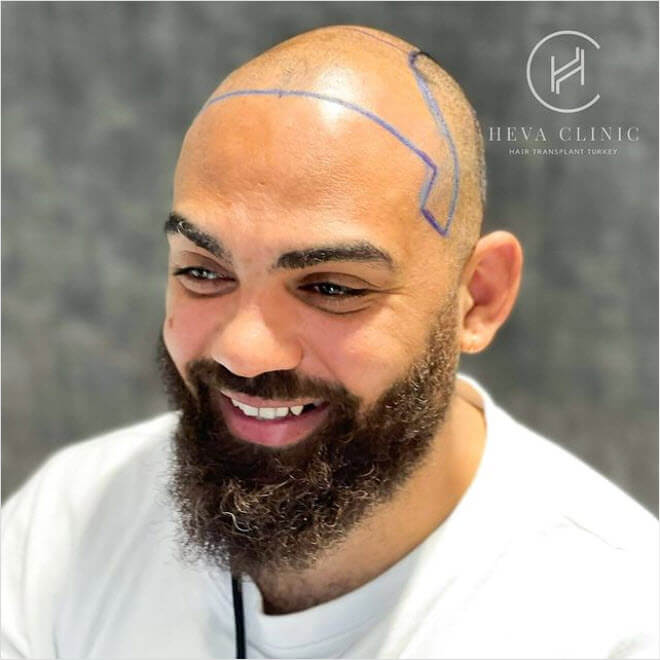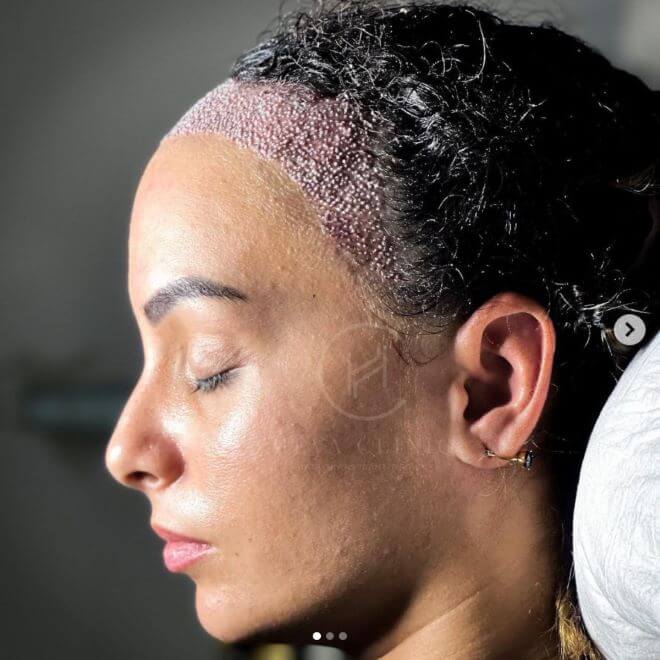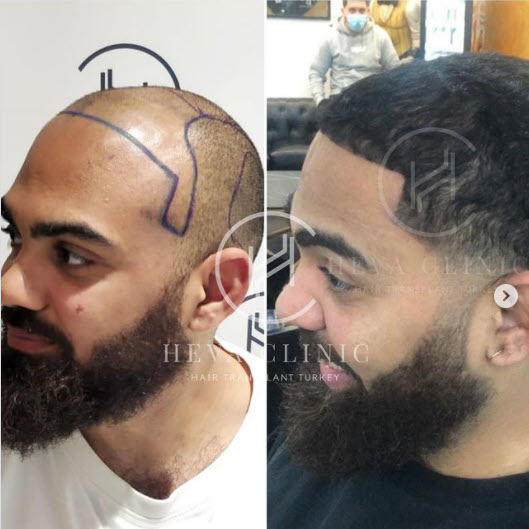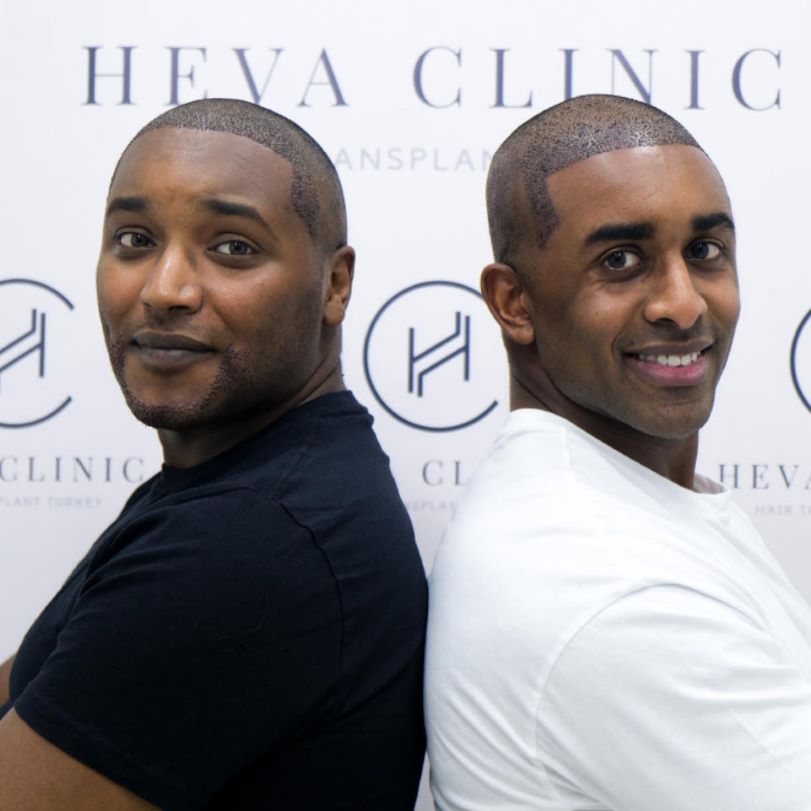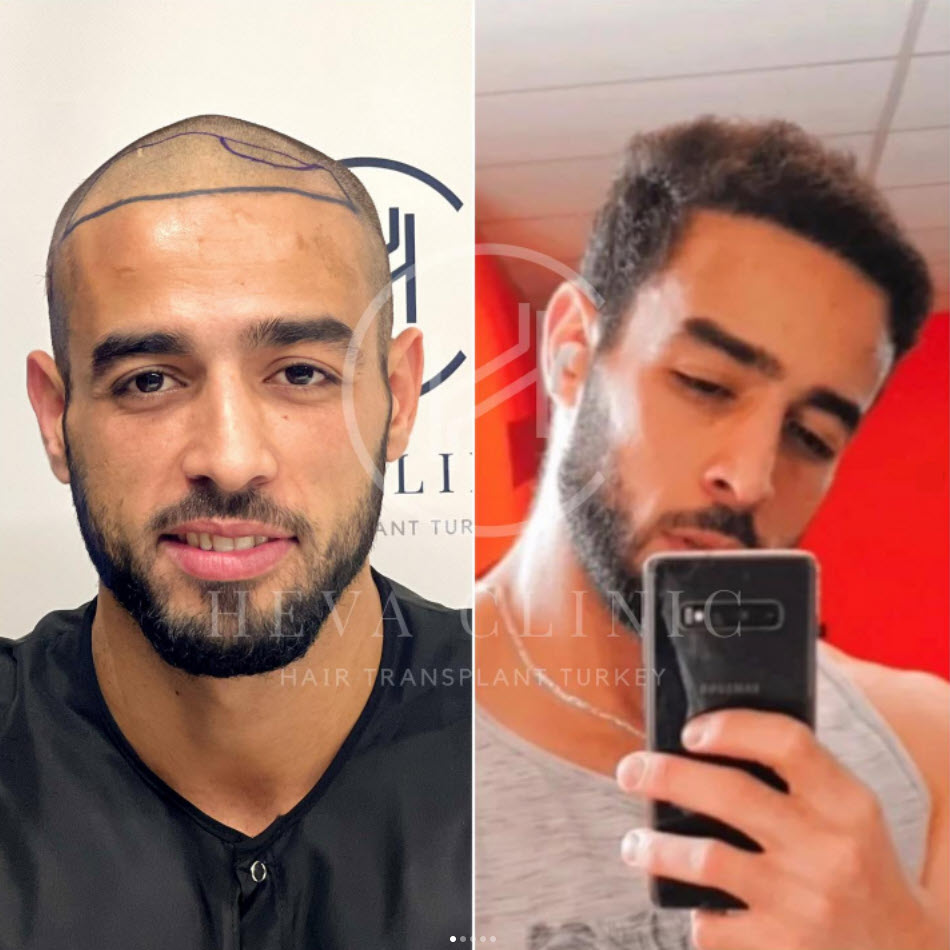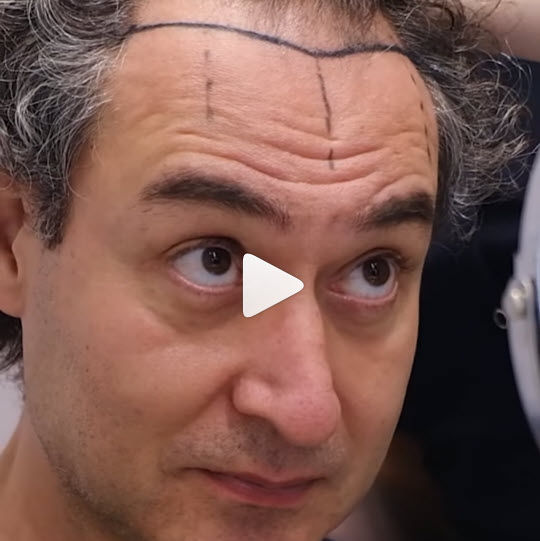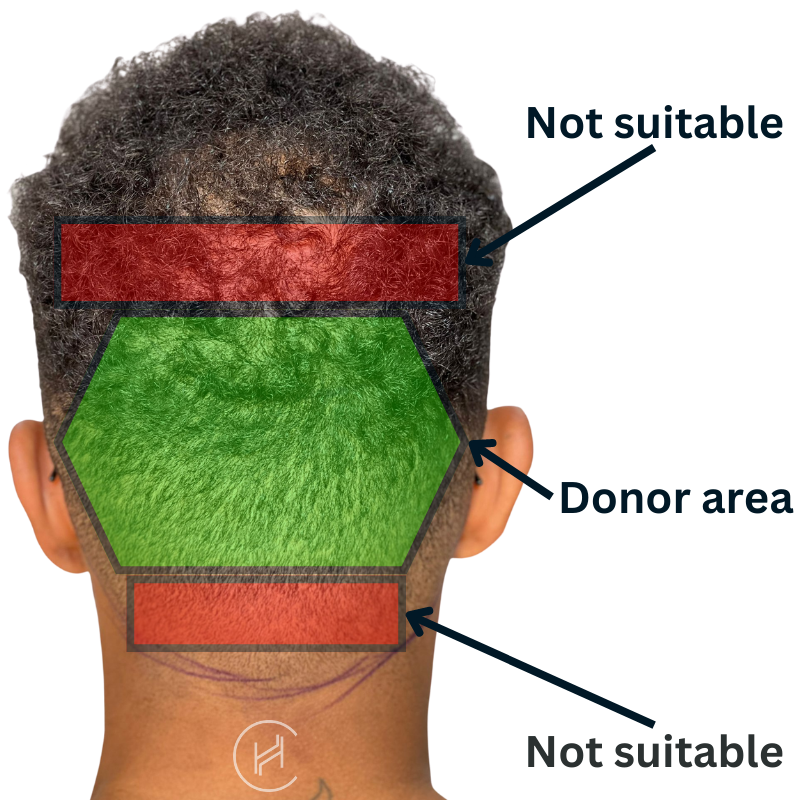
If you have been suffering from severe hair loss and looking into hair transplant operations to consider as a treatment option, you have probably heard about ‘donor area‘ quite a lot. The term donor area is extremely important for a hair transplant. But what exactly is it?
The donor area is the part of the body where the hair follicles are obtained for the transplant process. Even though in most cases this area is the back of the head, some other areas of the body can also be used as the donor area in special cases. Our practices as a clinic and medical studies shows that the quality and quantity of the hair follicles in the donor area greatly affect the final result of a hair transplant operation.
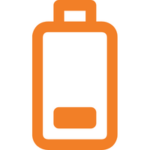
What is a thin/weak donor area for a hair transplant?
For a successful hair transplant, the number of available healthy hair follicles in the hair transplant donor site is crucial. If the donor area does not have sufficient amount of healthy hair follicles, this donor area is said to be a thin/weak donor area for hair transplant. Such donor areas might limit the number of hair grafts that can be transplanted and the final result of the hair transplant operation.
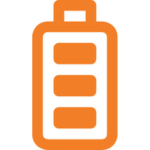
What is a good/strong donor area for a hair transplant?
Usually, a donor area that houses 12,000 to 10,000 healthy hair grafts is a good/strong hair transplant donor site. Such healthy donor areas can offer up to 6,000 grafts for a hair transplant. This type of donor area is the ultimate for successful hair transplant operations.
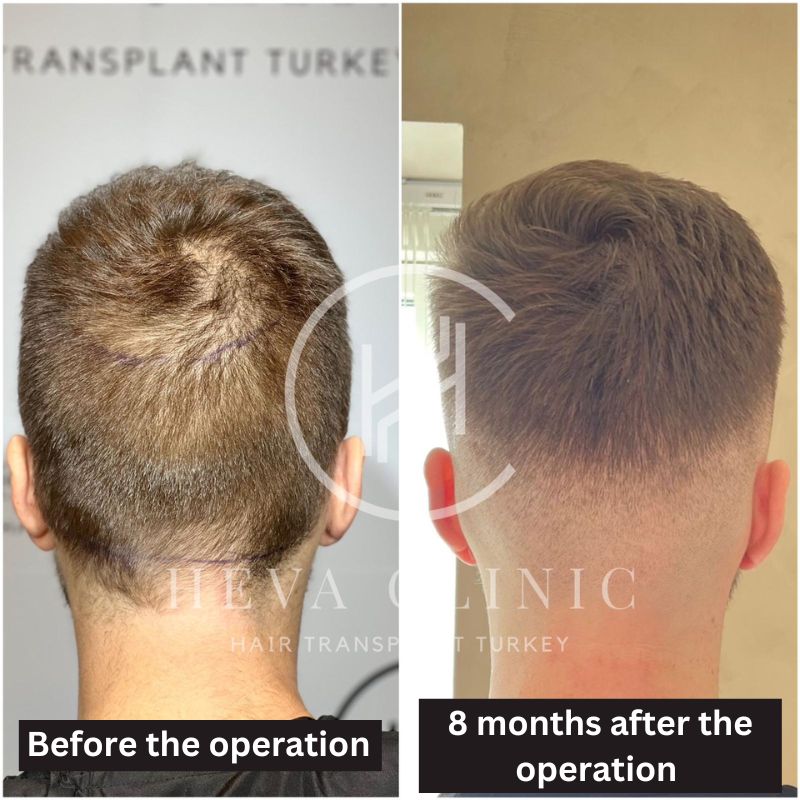
Where can donor hair be taken from?
The most suitable donor area for hair transplant is the back of the head. This area gives the most natural-looking results and has a high amount of healthy hair follicles. However, in some cases, the back of the head can be unsuitable as a donor area for hair transplant. In these cases, experienced surgeons needs to be really careful not to overharvest the donor area to prevent potential unnatural-looking results.
Also, the number of hair follicles might be insufficient or there might be balding in this area as well. If this is the case, alternative donor areas can be considered for a hair transplant. Beard and body hair are two of the possible hair transplant donor sites.

Beard as a donor area
Beard hair can be a great alternative that leads to natural looking results. Beard as a donor area can provide up to 3,000 hair grafts, but it’s recommended to limit the number to 1000 grafts to keep the natural appearance of the beard. This donor area can be used in combination with the back of the head or as a single source of hair grafts. If you have a thick beard, it might be a viable option for you.
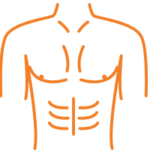
Body hair as a donor area
Body hair as a donor area has been suggested for people with insufficient scalp hair. While body hair can offer a viable alternative, it might lead to an unnatural look since body hair differs in thickness and structure. That’s why body hair can only be used on the crown area to improve the density.
How long does the donor area recovery take?
The donor area recovery can take up to 2 weeks. After the hair transplant surgery, your surgeon will place a light covering on the donor area. During this recovery period, you might feel some itching, sensitivity, and redness. However, there is no need to be worried about these symptoms as this is how your body heals the micro-wounds in the donor area. See our hair transplant healing timeline photos.
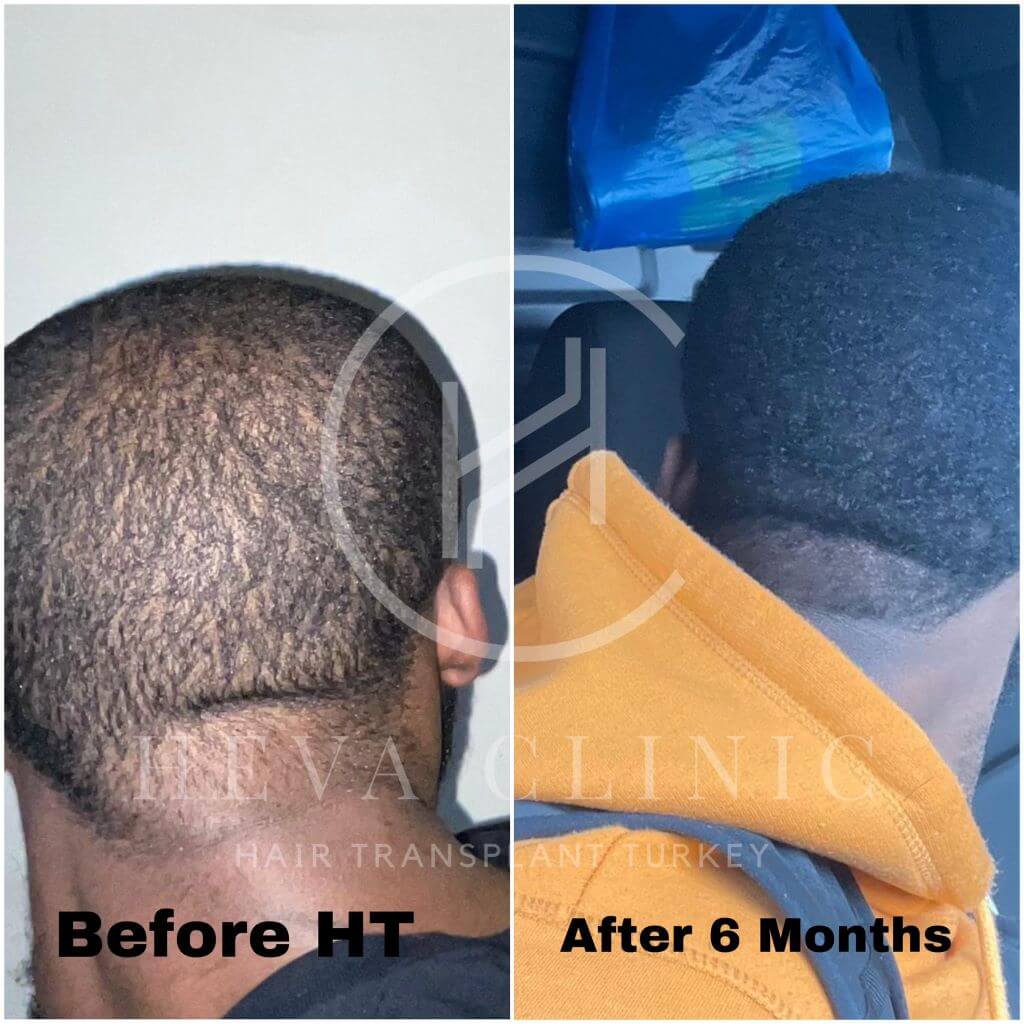
Does hair grow back in the donor area after a hair transplant?
Yes, the remaining hair follicles in the donor area after the hair transplant surgery will grow back. This might take a while because there will be thousands of tiny scars in the donor area, however; as it heals, you will see that the donor area goes back to its original state.
What is an over-harvested donor area?
Preserving the quality of the donor area in a hair transplant operation is critical for a natural and neat appearance. Because the donor area can only offer a limited amount of hair grafts without getting damaged, exceeding this limit can lead to an over-harvested donor area.
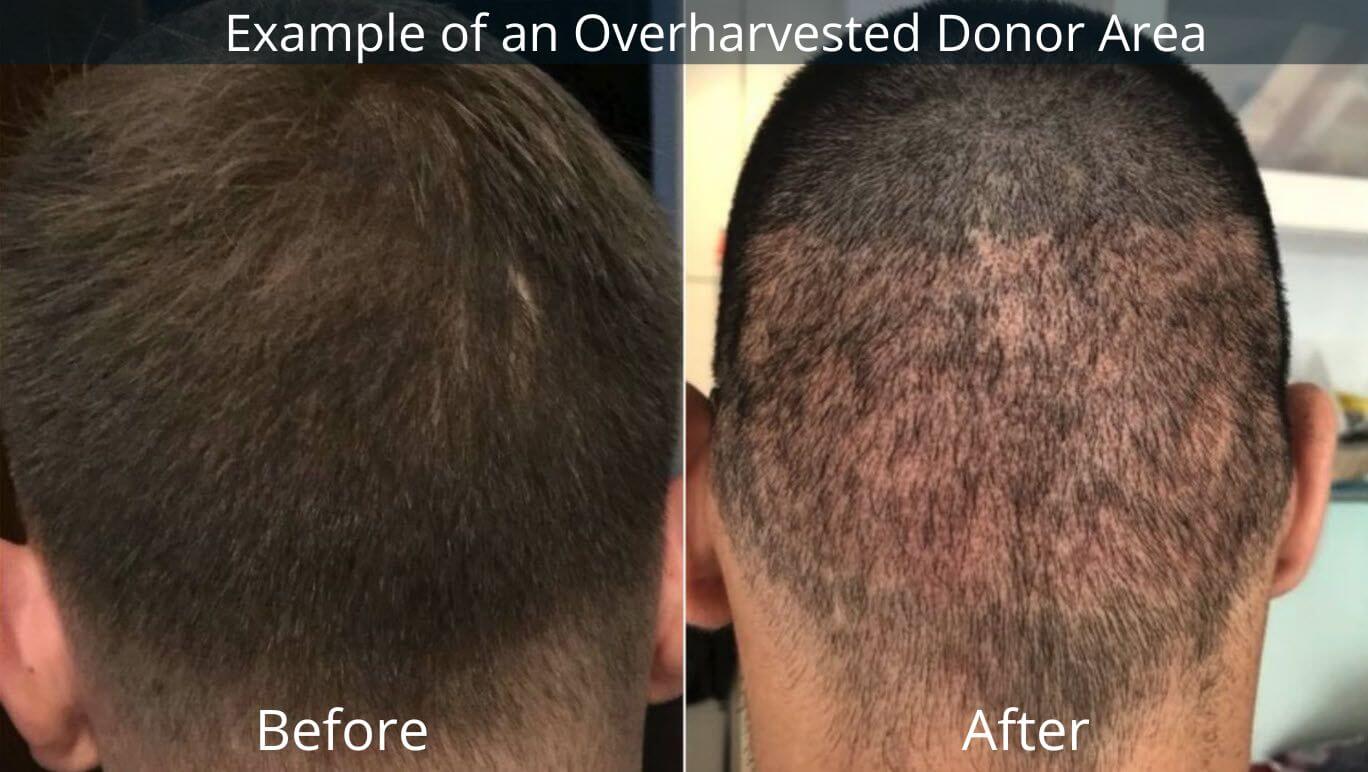
This usually occurs in high number of hair graft transplantation procedures such as when 7000 hair grafts are extracted. Overharvesting the donor area can damage the donor area and lead to a hair transplant donor scarring. That case is one of the most common failed hair transplant cases. This scarred area may seem to have a thinned, patchy, and even bald appearance. The best way to avoid hair transplant donor scar is to be careful about how many hair grafts are transplanted, or consider getting a second hair transplant in one year.
What I might experience in my donor area after a hair transplant surgery?
After your hair transplant operation, you will need to take care of the donor and recipient areas to ensure a smooth recovery. During this recovery period, you might have some symptoms in the donor area.
Because the donor area will have micro-wounds, you might feel a burning sensation during the healing process. This feeling is nothing to be worried about since it is a part of the healing. Your surgeon will prescribe some ointments to help with the burning.
Similarly, the scar tissue in the donor area can be itchy during the recovery period. You can take some medicine or use ointments to soothe the area.
Swelling in the donor area due to the anaesthetics used during the surgery and oedema as a result of the surgery is quite common. It should calm down 2-5 days after your surgery.
Feeling some pain in the donor area after a hair transplant is natural. Areas in which hair grafts are extracted can cause some pain and discomfort during the recovery process. The pain usually fades away in 2 to 5 days after your surgery.
The micro-scarring around the extracted hair follicles will eventually lead to minor scabs. It is important not to pick at these scabs to avoid inflammation and permanent scarring. You may need to get rid of the scabs between 7-10 days.
Folliculitis is an inflammation of the hair follicles. They usually look like small pimples in the donor area. These can be easily treated with medication and should go away in a few days.
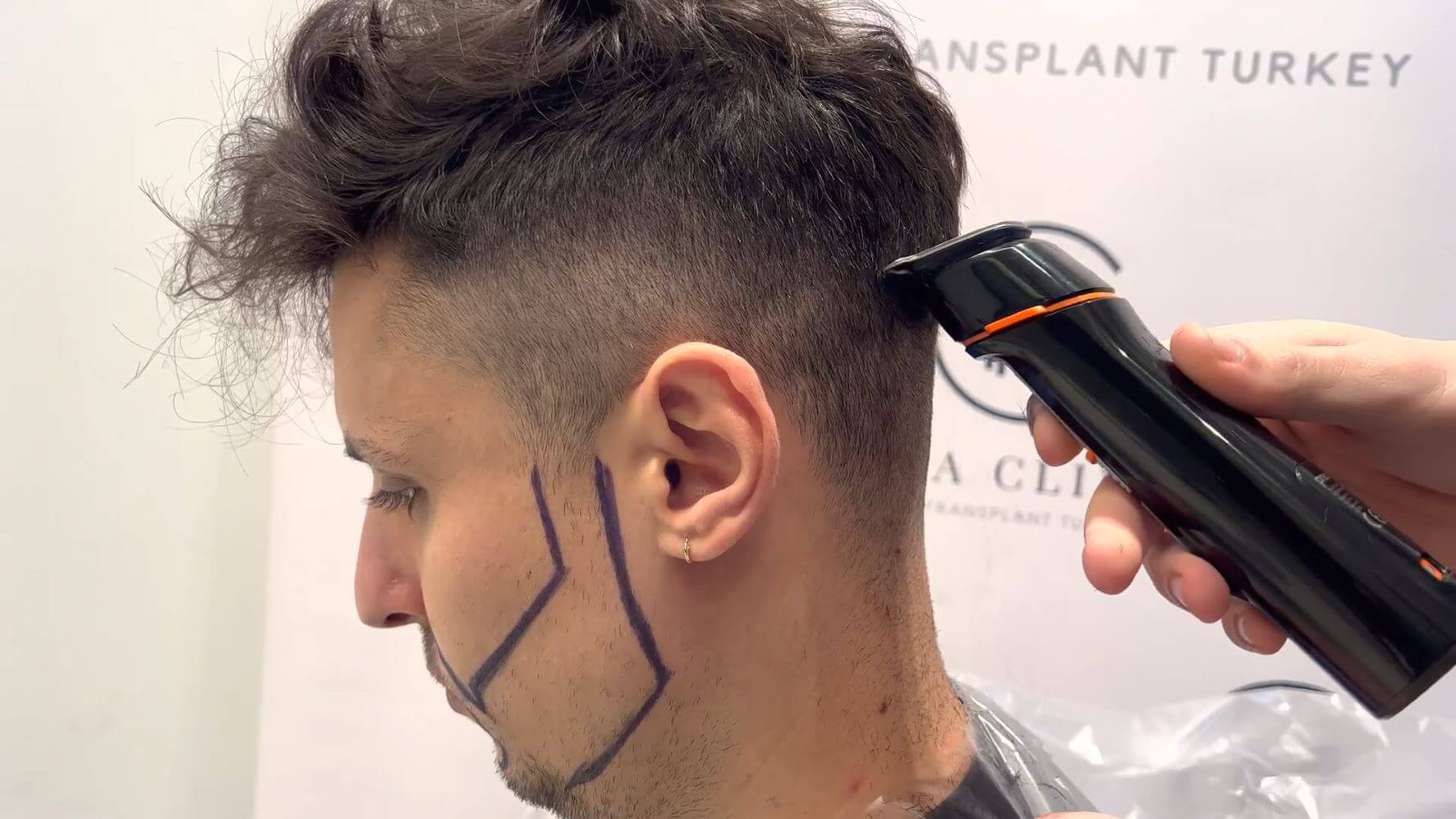
How to prevent donor area infection after a hair transplant?
To prevent donor area infection after a hair transplant, you need to keep the donor area as sanitary as possible.
- Try not to touch the donor area without sanitizing your hands
- Do not pick on your scabs or itch the donor area
- Follow your surgeon’s post-operation instructions and reach them if something is going wrong.
Frequently asked questions
Can you use someone else's hair for a hair transplant?
No, your body would reject someone else’s hair follicles. This is why the hair transplant operations only use your natural hair.
Is a hair transplant possible for everyone?
Given that the question is fairly broad, a hair transplant is possible for everyone that has sufficient healthy hair grafts and does not have a serious health condition.
Can you run out of donor hair?
Yes, unfortunately, you may run out of donor hair for hair transplant if your healthy hair grafts are already used or your donor area is overharvested.
Even though it changes from case to case, the capacity of the donor area is about 6000 grafts; meaning that no one can notice that had a hair transplant as the grafts will be extracted homogeneously. However, if you have one our multiple hair transplants where 6000 grafts are used, you would run out of donor hair that makes you ineligible for a new operation.

